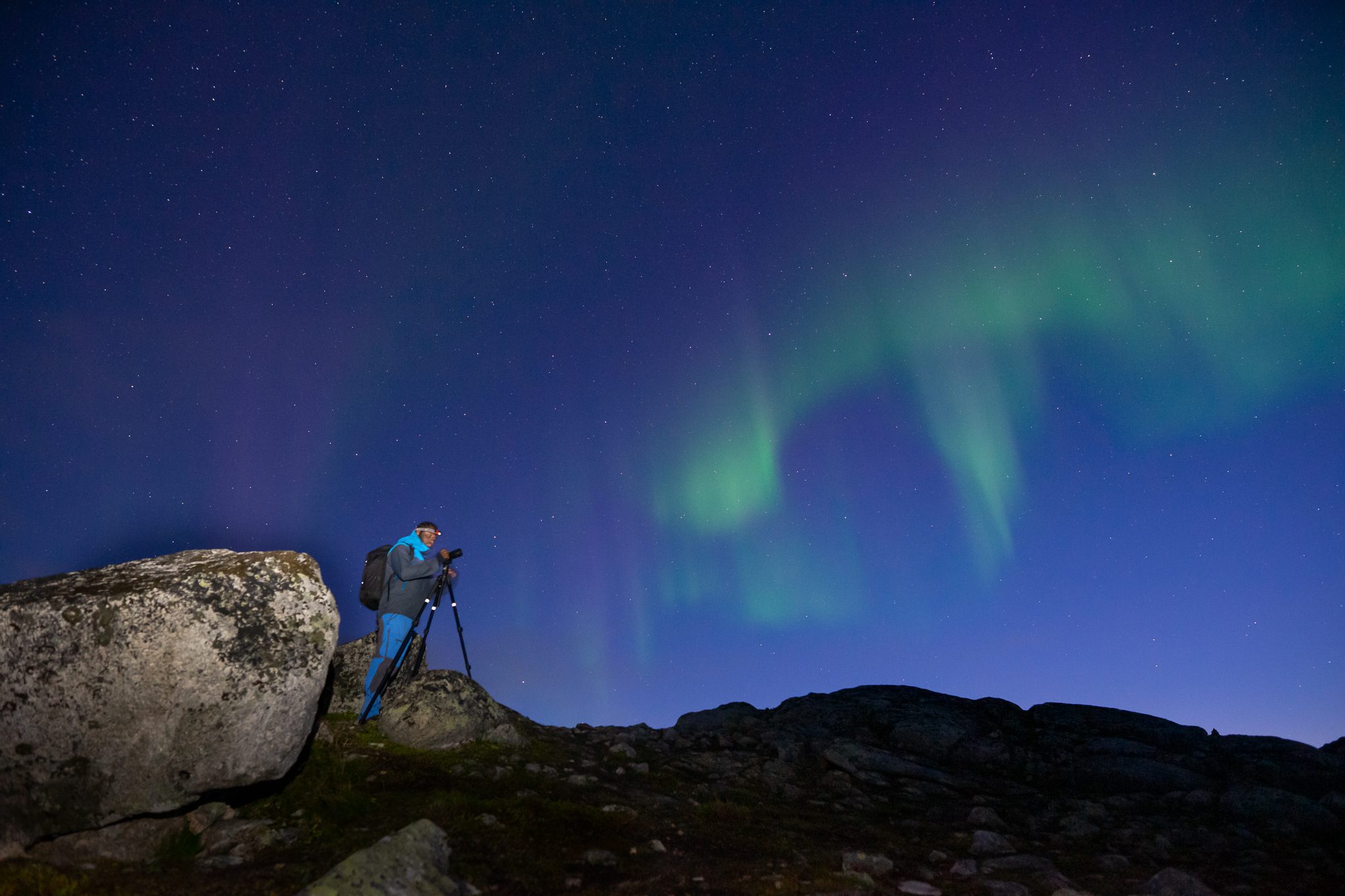Travellers from around the world come to Tromsø as it’s one of the best places in the world to see and photograph the Northern Lights.
Whether you go on a Northern Lights chase by bus (we have guided tours from Tromsø and Narvik), or using your own means of transportation, you will soon realise that equipment is a vital aspect to photograph the aurora borealis.
Read our tips about how to pack for an aurora photography session in this article.
1. Warm clothes and footwear
As the Northern Lights is a natural phenomenon and can appear anytime from 6pm to 1am during winter, you will often need to wait several hours in the cold to see them (temperatures can drop to -20°C in the mountain valleys around Tromsø).
Consequently, it’s vital to wear appropriate clothes. Leave your jeans and anything made of cotton at your hotel and instead opt for ski pants, socks and merino wool, which is ideal as thermal base layer. The other trick is wearing three layers: a base layer (thin wool or synthetics), a mid-layer (fleece or thicker wool) and an outer layer (windproof and waterproof jacket).
On our guided Northern Lights tours, we provide thermal suits (and winter overshoes – these are really practical to keep your feet warm and dry when put over your winter shoes – on our Aurora Safari Minibus).
Bring a pair of thin gloves for a better manipulation of the camera and switch to thicker mittens to keep your hands warm when you are not using it. Don’t forget your coolest beanie!
2. Camera and lens
Even though the latest smartphones have improved at night photography, it’s still better to use a camera with a manual mode (DSLR), which will give you more options to photograph the Northern Lights.
You can bring different lenses but, as the aurora borealis cover much of the sky, it’s important to have a wide-angle lens, ideally between 14mm and 25mm. You also need a fast lens (one with wide maximum aperture) that will let as much light into the camera’s sensor as possible.
Most night sky photographers use lenses with an aperture between F1.4 and F4.0, depending on light conditions.
3. Camera accessories
A sturdy tripod is necessary to take photos of the Northern Lights, as you’ll work with long exposure times and any shaking would lead to pictures blurry. Similarly, it’s best to use a remote shutter release to avoid camera shake when pressing this button. A limited number of tripods are free to use during some of our Northern Lights trips.
Think extra! Your camera batteries will drain faster with the cold, so take extra batteries and make sure to keep them in a pocket close to your body so they stay warm. The same goes for your phone so bring a power bank. A spare SD card can also come in handy, as exposure photography produces large file sizes.
We recommend bringing a headlight to help you set up your camera easily and quickly in the dark. It’s also useful for taking portraits of your family and friends under the Northern Lights! However, remember that this can be a nuisance if someone nearby is trying to take a photo.
4. Hot drinks and snacks
Your body will work hard to stay warm so it’s important to keep your energy level up! We recommend bringing some food and hot drinks. If you join one of our tours, a sweet snack as well as hot chocolate, coffee and tea are included (also a soup or stew, depending on the tours).
5. Smartphone
If you go aurora chasing on your own, take your smartphone to check the aurora activity and the weather conditions in different places in case you need to move to a better location.
You don’t need to worry about that when joining our tours as your guide will check everything to find the best spot but take your phone anyway so you can text your family and friends that you (hopefully) saw an amazing Northern Lights show!
Check all our Northern Lights tours here and guarantee your place!




